CHEMICAL IDENTIFICATION
-
RTECS NUMBER :
-
GW1050000
-
CHEMICAL NAME :
-
Cyclohexanone
-
CAS REGISTRY NUMBER :
-
108-94-1
-
LAST UPDATED :
-
199712
-
DATA ITEMS CITED :
-
73
-
MOLECULAR FORMULA :
-
C6-H10-O
-
MOLECULAR WEIGHT :
-
98.16
-
WISWESSER LINE NOTATION :
-
L6VTJ
HEALTH HAZARD DATA
ACUTE TOXICITY DATA
-
TYPE OF TEST :
-
Standard Draize test
-
ROUTE OF EXPOSURE :
-
Administration into the eye
-
SPECIES OBSERVED :
-
Human
-
TYPE OF TEST :
-
Open irritation test
-
ROUTE OF EXPOSURE :
-
Administration onto the skin
-
SPECIES OBSERVED :
-
Rodent - rabbit
-
REFERENCE :
-
UCDS** Union Carbide Data Sheet. (Union Carbide Corp., 39 Old Ridgebury Rd., Danbury, CT 06817)
-
TYPE OF TEST :
-
Standard Draize test
-
ROUTE OF EXPOSURE :
-
Administration into the eye
-
SPECIES OBSERVED :
-
Rodent - rabbit
-
TYPE OF TEST :
-
Standard Draize test
-
ROUTE OF EXPOSURE :
-
Administration into the eye
-
SPECIES OBSERVED :
-
Rodent - rabbit
-
TYPE OF TEST :
-
TCLo - Lowest published toxic concentration
-
ROUTE OF EXPOSURE :
-
Inhalation
-
SPECIES OBSERVED :
-
Human
-
DOSE/DURATION :
-
75 ppm
-
TOXIC EFFECTS :
-
Sense Organs and Special Senses (Olfaction) - effect, not otherwise specified Sense Organs and Special Senses (Eye) - conjunctive irritation Lungs, Thorax, or Respiration - other changes
-
TYPE OF TEST :
-
LD50 - Lethal dose, 50 percent kill
-
ROUTE OF EXPOSURE :
-
Oral
-
SPECIES OBSERVED :
-
Rodent - rat
-
DOSE/DURATION :
-
1620 uL/kg
-
TOXIC EFFECTS :
-
Details of toxic effects not reported other than lethal dose value
-
TYPE OF TEST :
-
LC50 - Lethal concentration, 50 percent kill
-
ROUTE OF EXPOSURE :
-
Inhalation
-
SPECIES OBSERVED :
-
Rodent - rat
-
DOSE/DURATION :
-
8000 ppm/4H
-
TOXIC EFFECTS :
-
Details of toxic effects not reported other than lethal dose value
-
TYPE OF TEST :
-
LD50 - Lethal dose, 50 percent kill
-
ROUTE OF EXPOSURE :
-
Intraperitoneal
-
SPECIES OBSERVED :
-
Rodent - rat
-
DOSE/DURATION :
-
1130 mg/kg
-
TOXIC EFFECTS :
-
Gastrointestinal - other changes
-
TYPE OF TEST :
-
LD50 - Lethal dose, 50 percent kill
-
ROUTE OF EXPOSURE :
-
Subcutaneous
-
SPECIES OBSERVED :
-
Rodent - rat
-
DOSE/DURATION :
-
2170 mg/kg
-
TOXIC EFFECTS :
-
Details of toxic effects not reported other than lethal dose value
-
TYPE OF TEST :
-
LDLo - Lowest published lethal dose
-
ROUTE OF EXPOSURE :
-
Intravenous
-
SPECIES OBSERVED :
-
Rodent - rat
-
DOSE/DURATION :
-
568 mg/kg
-
TOXIC EFFECTS :
-
Details of toxic effects not reported other than lethal dose value
-
TYPE OF TEST :
-
LD50 - Lethal dose, 50 percent kill
-
ROUTE OF EXPOSURE :
-
Oral
-
SPECIES OBSERVED :
-
Rodent - mouse
-
DOSE/DURATION :
-
1400 mg/kg
-
TOXIC EFFECTS :
-
Details of toxic effects not reported other than lethal dose value
-
TYPE OF TEST :
-
LCLo - Lowest published lethal concentration
-
ROUTE OF EXPOSURE :
-
Inhalation
-
SPECIES OBSERVED :
-
Rodent - mouse
-
DOSE/DURATION :
-
19200 mg/m3/90M
-
TOXIC EFFECTS :
-
Gastrointestinal - other changes
-
TYPE OF TEST :
-
LD50 - Lethal dose, 50 percent kill
-
ROUTE OF EXPOSURE :
-
Intraperitoneal
-
SPECIES OBSERVED :
-
Rodent - mouse
-
DOSE/DURATION :
-
1230 mg/kg
-
TOXIC EFFECTS :
-
Gastrointestinal - other changes
-
TYPE OF TEST :
-
LDLo - Lowest published lethal dose
-
ROUTE OF EXPOSURE :
-
Subcutaneous
-
SPECIES OBSERVED :
-
Rodent - mouse
-
DOSE/DURATION :
-
1300 mg/kg
-
TOXIC EFFECTS :
-
Behavioral - somnolence (general depressed activity) Behavioral - ataxia Lungs, Thorax, or Respiration - other changes
-
TYPE OF TEST :
-
LDLo - Lowest published lethal dose
-
ROUTE OF EXPOSURE :
-
Intravenous
-
SPECIES OBSERVED :
-
Primate - monkey
-
DOSE/DURATION :
-
284 mg/kg
-
TOXIC EFFECTS :
-
Details of toxic effects not reported other than lethal dose value
-
TYPE OF TEST :
-
LDLo - Lowest published lethal dose
-
ROUTE OF EXPOSURE :
-
Oral
-
SPECIES OBSERVED :
-
Rodent - rabbit
-
DOSE/DURATION :
-
1600 mg/kg
-
TOXIC EFFECTS :
-
Behavioral - general anesthetic
-
TYPE OF TEST :
-
LD50 - Lethal dose, 50 percent kill
-
ROUTE OF EXPOSURE :
-
Administration onto the skin
-
SPECIES OBSERVED :
-
Rodent - rabbit
-
DOSE/DURATION :
-
1 mL/kg
-
TOXIC EFFECTS :
-
Details of toxic effects not reported other than lethal dose value
-
TYPE OF TEST :
-
LD50 - Lethal dose, 50 percent kill
-
ROUTE OF EXPOSURE :
-
Intraperitoneal
-
SPECIES OBSERVED :
-
Rodent - rabbit
-
DOSE/DURATION :
-
1540 mg/kg
-
TOXIC EFFECTS :
-
Gastrointestinal - other changes
-
TYPE OF TEST :
-
LCLo - Lowest published lethal concentration
-
ROUTE OF EXPOSURE :
-
Inhalation
-
SPECIES OBSERVED :
-
Rodent - guinea pig
-
DOSE/DURATION :
-
400 ppm/4H
-
TOXIC EFFECTS :
-
Details of toxic effects not reported other than lethal dose value
-
TYPE OF TEST :
-
LDLo - Lowest published lethal dose
-
ROUTE OF EXPOSURE :
-
Intraperitoneal
-
SPECIES OBSERVED :
-
Rodent - guinea pig
-
DOSE/DURATION :
-
760 mg/kg
-
TOXIC EFFECTS :
-
Details of toxic effects not reported other than lethal dose value
-
TYPE OF TEST :
-
LDLo - Lowest published lethal dose
-
ROUTE OF EXPOSURE :
-
Subcutaneous
-
SPECIES OBSERVED :
-
Amphibian - frog
-
DOSE/DURATION :
-
1900 mg/kg
-
TOXIC EFFECTS :
-
Autonomic Nervous System - other (direct) parasympathomimetic Behavioral - changes in motor activity (specific assay) Lungs, Thorax, or Respiration - other changes
-
TYPE OF TEST :
-
LD50 - Lethal dose, 50 percent kill
-
ROUTE OF EXPOSURE :
-
Oral
-
SPECIES OBSERVED :
-
Mammal - species unspecified
-
DOSE/DURATION :
-
3 gm/kg
-
TOXIC EFFECTS :
-
Details of toxic effects not reported other than lethal dose value
-
TYPE OF TEST :
-
LC50 - Lethal concentration, 50 percent kill
-
ROUTE OF EXPOSURE :
-
Inhalation
-
SPECIES OBSERVED :
-
Mammal - species unspecified
-
DOSE/DURATION :
-
25 gm/m3
-
TOXIC EFFECTS :
-
Details of toxic effects not reported other than lethal dose value
-
TYPE OF TEST :
-
TDLo - Lowest published toxic dose
-
ROUTE OF EXPOSURE :
-
Intravenous
-
SPECIES OBSERVED :
-
Mammal - dog
-
DOSE/DURATION :
-
4260 mg/kg/21D-I
-
TOXIC EFFECTS :
-
Blood - changes in bone marrow (not otherwise specified) Skin and Appendages - dermatitis, other (after systemic exposure) Related to Chronic Data - death
-
TYPE OF TEST :
-
TCLo - Lowest published toxic concentration
-
ROUTE OF EXPOSURE :
-
Inhalation
-
SPECIES OBSERVED :
-
Rodent - rabbit
-
DOSE/DURATION :
-
3082 ppm/6H/3W-I
-
TOXIC EFFECTS :
-
Behavioral - ataxia Nutritional and Gross Metabolic - weight loss or decreased weight gain Related to Chronic Data - death
-
TYPE OF TEST :
-
TCLo - Lowest published toxic concentration
-
ROUTE OF EXPOSURE :
-
Inhalation
-
DOSE :
-
105 mg/m3/4H
-
SEX/DURATION :
-
female 1-20 day(s) after conception
-
TOXIC EFFECTS :
-
Reproductive - Fertility - pre-implantation mortality (e.g. reduction in number of implants per female; total number of implants per corpora lutea)
-
TYPE OF TEST :
-
TDLo - Lowest published toxic dose
-
ROUTE OF EXPOSURE :
-
Oral
-
DOSE :
-
11 gm/kg
-
SEX/DURATION :
-
female 8-12 day(s) after conception
-
TOXIC EFFECTS :
-
Reproductive - Effects on Newborn - growth statistics (e.g.%, reduced weight gain)
MUTATION DATA
-
TYPE OF TEST :
-
Mutation in mammalian somatic cells
-
TEST SYSTEM :
-
Rodent - hamster Ovary
-
REFERENCE :
-
ENMUDM Environmental Mutagenesis. (New York, NY) V.1-9, 1979-87. For publisher information, see EMMUEG. Volume(issue)/page/year: 7(Suppl 3),60,1985 *** REVIEWS *** ACGIH TLV-Not classifiable as a human carcinogen DTLVS* The Threshold Limit Values (TLVs) and Biological Exposure Indices (BEIs) booklet issues by American Conference of Governmental Industrial Hygienists (ACGIH), Cincinnati, OH, 1996 Volume(issue)/page/year: TLV/BEI,1997 ACGIH TLV-TWA 100 mg/m3 (25 ppm) (skin) DTLVS* The Threshold Limit Values (TLVs) and Biological Exposure Indices (BEIs) booklet issues by American Conference of Governmental Industrial Hygienists (ACGIH), Cincinnati, OH, 1996 Volume(issue)/page/year: TLV/BEI,1997 IARC Cancer Review:Animal Inadequate Evidence IMEMDT IARC Monographs on the Evaluation of Carcinogenic Risk of Chemicals to Man. (WHO Publications Centre USA, 49 Sheridan Ave., Albany, NY 12210) V.1- 1972- Volume(issue)/page/year: 47,157,1989 IARC Cancer Review:Group 3 IMEMDT IARC Monographs on the Evaluation of Carcinogenic Risk of Chemicals to Man. (WHO Publications Centre USA, 49 Sheridan Ave., Albany, NY 12210) V.1- 1972- Volume(issue)/page/year: 47,157,1989 *** U.S. STANDARDS AND REGULATIONS *** EPA FIFRA 1988 PESTICIDE SUBJECT TO REGISTRATION OR RE-REGISTRATION FEREAC Federal Register. (U.S. Government Printing Office, Supt. of Documents, Washington, DC 20402) V.1- 1936- Volume(issue)/page/year: 54,7740,1989 MSHA STANDARD-air:TWA 50 ppm (200 mg/m3) DTLVS* The Threshold Limit Values (TLVs) and Biological Exposure Indices (BEIs) booklet issues by American Conference of Governmental Industrial Hygienists (ACGIH), Cincinnati, OH, 1996 Volume(issue)/page/year: 3,66,1971 OSHA PEL (Gen Indu):8H TWA 50 ppm (200 mg/m3) CFRGBR Code of Federal Regulations. (U.S. Government Printing Office, Supt. of Documents, Washington, DC 20402) Volume(issue)/page/year: 29,1910.1000,1994 OSHA PEL (Construc):8H TWA 50 ppm (200 mg/m3) CFRGBR Code of Federal Regulations. (U.S. Government Printing Office, Supt. of Documents, Washington, DC 20402) Volume(issue)/page/year: 29,1926.55,1994 OSHA PEL (Shipyard):8H TWA 50 ppm (200 mg/m3) CFRGBR Code of Federal Regulations. (U.S. Government Printing Office, Supt. of Documents, Washington, DC 20402) Volume(issue)/page/year: 29,1915.1000,1993 OSHA PEL (Fed Cont):8H TWA 50 ppm (200 mg/m3) CFRGBR Code of Federal Regulations. (U.S. Government Printing Office, Supt. of Documents, Washington, DC 20402) Volume(issue)/page/year: 41,50-204.50,1994 *** OCCUPATIONAL EXPOSURE LIMITS *** OEL-AUSTRALIA:TWA 25 ppm (100 mg/m3) JAN 1993 OEL-AUSTRIA:TWA 50 ppm (200 mg/m3) JAN 1993 OEL-BELGIUM:TWA 25 ppm (100 mg/m3) JAN 1993 OEL-DENMARK:TWA 25 ppm (100 mg/m3) JAN 1993 OEL-FINLAND:TWA 50 ppm (200 mg/m3);STEL 75 ppm (250 mg/m3) JAN 1993 OEL-FRANCE:TWA 25 ppm (100 mg/m3) JAN 1993 OEL-GERMANY:TWA 50 ppm (200 mg/m3) JAN 1993 OEL-HUNGARY:TWA 100 mg/m3;STEL 200 mg/m3;Skin JAN 1993 OEL-JAPAN:TWA 25 ppm (100 mg/m3) JAN 1993 OEL-THE NETHERLANDS:TWA 50 ppm (200 mg/m3) JAN 1993 OEL-THE PHILIPPINES:TWA 50 ppm (200 mg/m3) JAN 1993 OEL-POLAND:TWA 2 mg/m3 JAN 1993 OEL-RUSSIA:TWA 25 ppm;STEL 10 mg/m3 JAN 1993 OEL-SWEDEN:TWA 25 ppm (100 mg/m3);STEL 50 ppm (200 mg/m3);Skin JAN 1993 OEL-SWITZERLAND:TWA 25 ppm (100 mg/m3);STEL 50 ppm (200 mg/m3) JAN 1993 OEL-TURKEY:TWA 50 ppm (200 mg/m3) JAN 1993 OEL-UNITED KINGDOM:TWA 25 ppm (100 mg/m3);STEL 100 ppm JAN 1993 OEL IN BULGARIA, COLOMBIA, JORDAN, KOREA check ACGIH TLV OEL IN NEW ZEALAND, SINGAPORE, VIETNAM check ACGIH TLV *** NIOSH STANDARDS DEVELOPMENT AND SURVEILLANCE DATA *** NIOSH RECOMMENDED EXPOSURE LEVEL (REL) : NIOSH REL TO CYCLOHEXANONE-air:10H TWA 25 ppm (Sk) REFERENCE : NIOSH* National Institute for Occupational Safety and Health, U.S. Dept. of Health, Education, and Welfare, Reports and Memoranda. Volume(issue)/page/year: DHHS #92-100,1992 NIOSH OCCUPATIONAL EXPOSURE SURVEY DATA : NOHS - National Occupational Hazard Survey (1974) NOHS Hazard Code - 21660 No. of Facilities: 13457 (estimated) No. of Industries: 123 No. of Occupations: 98 No. of Employees: 151748 (estimated) NOES - National Occupational Exposure Survey (1983) NOES Hazard Code - 21660 No. of Facilities: 33556 (estimated) No. of Industries: 160 No. of Occupations: 117 No. of Employees: 436935 (estimated) No. of Female Employees: 43406 (estimated)
|







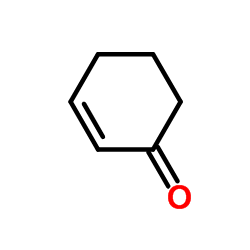 CAS#:930-68-7
CAS#:930-68-7 CAS#:822-67-3
CAS#:822-67-3 CAS#:110-82-7
CAS#:110-82-7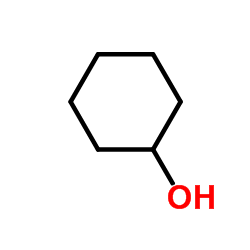 CAS#:108-93-0
CAS#:108-93-0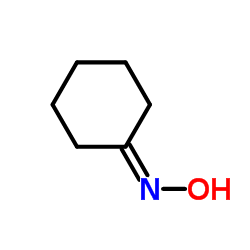 CAS#:100-64-1
CAS#:100-64-1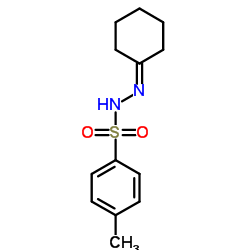 CAS#:4545-18-0
CAS#:4545-18-0 CAS#:64-17-5
CAS#:64-17-5 CAS#:110-83-8
CAS#:110-83-8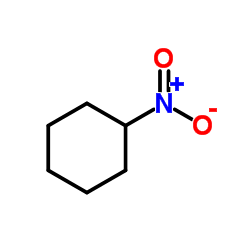 CAS#:1122-60-7
CAS#:1122-60-7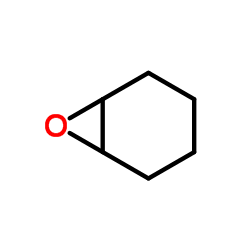 CAS#:286-20-4
CAS#:286-20-4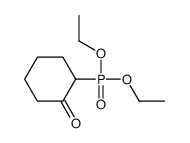 CAS#:1080-41-7
CAS#:1080-41-7![N-[2-(dimethylamino)ethyl]-9H-carbazole-1-carboxamide structure](https://image.chemsrc.com/caspic/388/112022-16-9.png) CAS#:112022-16-9
CAS#:112022-16-9![7-[(4-methoxyphenyl)methyl]spiro[2.5]octan-8-one structure](https://image.chemsrc.com/caspic/070/110129-39-0.png) CAS#:110129-39-0
CAS#:110129-39-0![2-[(4-fluorophenyl)methylidene]cyclohexan-1-one structure](https://image.chemsrc.com/caspic/393/111729-74-9.png) CAS#:111729-74-9
CAS#:111729-74-9![[cyclohexen-1-yl(phenylsulfanyl)methyl]-trimethylsilane structure](https://image.chemsrc.com/caspic/459/100693-33-2.png) CAS#:100693-33-2
CAS#:100693-33-2 CAS#:106795-52-2
CAS#:106795-52-2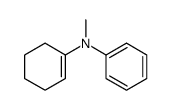 CAS#:10468-26-5
CAS#:10468-26-5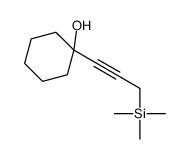 CAS#:111999-87-2
CAS#:111999-87-2 CAS#:10496-51-2
CAS#:10496-51-2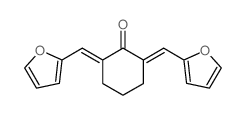 CAS#:893-00-5
CAS#:893-00-5
